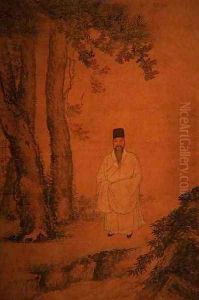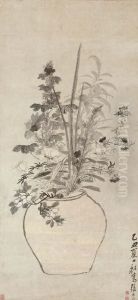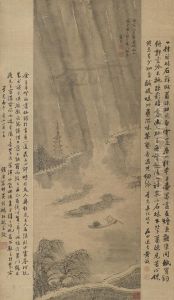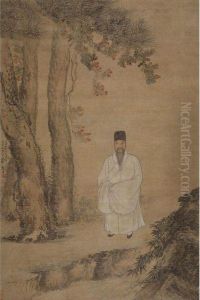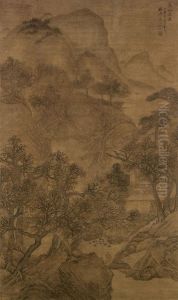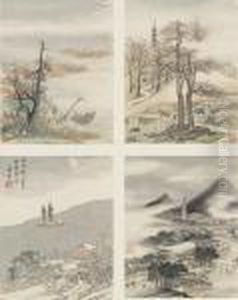Zhang Hong Paintings
Zhang Hong was a Chinese painter from the late Ming to early Qing Dynasty, whose life and career spanned a period of great turmoil and transition in China. Born in 1577, Zhang Hong grew up during a time when the Ming Dynasty was in decline, and he would later witness the rise of the Qing Dynasty.
Zhang Hong is known for his landscapes and for being part of a group of artists who were interested in innovating within the tradition of Chinese landscape painting. He was influenced by earlier masters such as Dong Qichang, who advocated the concept of 'Southern School' painting, which emphasized a more freehand and expressive approach to landscape art, as opposed to the 'Northern School' which was more focused on meticulous detail and realism.
Throughout his career, Zhang Hong's style evolved. He began with a more detailed and realistic approach, but gradually moved towards a freer and more spontaneous method, which was in line with the literati painting ideals of personal expression and scholarly detachment. His works are characterized by their elegant composition, use of brush and ink, and the subtle interplay of light and shadow.
Zhang Hong was also part of the 'Nine Friends of Painting', a group of artists who shared similar artistic interests and philosophies. His interactions with these peers helped to foster his style and reputation. Despite the high regard in which he was held by his contemporaries and later generations, detailed records of his life are relatively sparse, which is not uncommon for artists of this period.
Zhang Hong's life was overshadowed by the political upheavals of his time. The transition from the Ming to the Qing Dynasty was marked by widespread chaos, rebellion, and warfare. It was during these challenging times that Zhang continued to paint, and his art provides a window into the world of a scholar-artist during one of China's most tumultuous historical periods.
Zhang Hong passed away in 1652, leaving behind a legacy that has been appreciated by art connoisseurs and historians. His work is preserved in various collections and continues to be studied for its contribution to the evolution of Chinese landscape painting.
